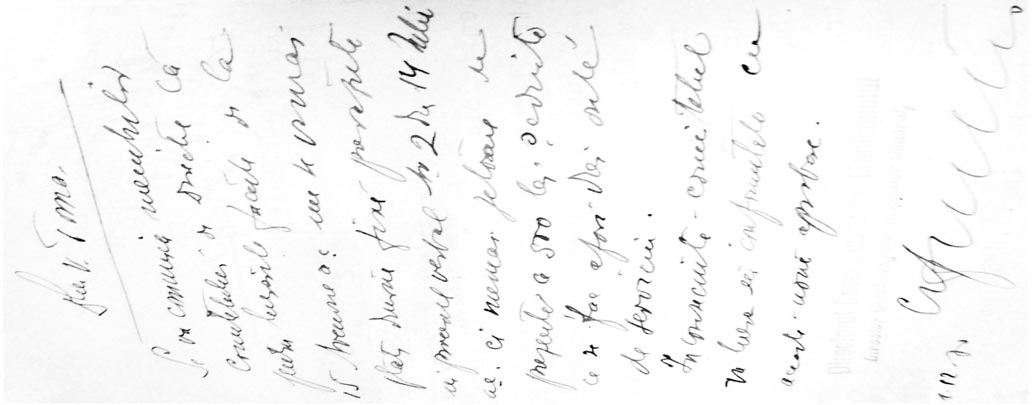
With respect to Cincinat Sfinţescu’s activity as a civil servant there are a few issues that need to be emphasized. His experience in leading positions at Bucharest City Hall contributed decisively to his professional training. It was a practical specialization, at a decisional level, which developed his theoretical specialization acquired through the scholarship period spent in Western Europe.
C. Sfinţescu was the first engineer with a training urban planning working at Bucharest City Hall.
His uninterrupted activity as a civil servant (20 years in leading positions) is all the more remarkable as it was doubled by a constant theoretical research and a didactic career within three higher education institutions.
Municipality of Bucharest
In May 1914 we was appointed Chief of the Bucharest Planning Service and entrusted with the drafting of the new Bucharest master plan.
In the spring of 1920 he became director of the Cadastral Office and of the Bucharest Commission of Public Works.
In the 1930s, under C. Sfinţescu’s leadership, the Bucharest General Cadastral and Planning Board had about 100 employees (including 4 engineers and 3 architects).
In 1928 he started to regularly take part in the meetings of the new Bucharest Planning Committee.
The Planning Committee was founded in 1928 by mayor I. Costinescu in order to draft the Bucharest Masterplan. Its first formula comprised 19 members, including the following: I. Costinescu, Engineer Inspector General Elie Radu, Engineer Inspector General N. Vasilescu-Karpen, Engineer Inspector General Săbăreanu, Arch. P. Smărăndescu, Chief Engineer C. Sfinţescu, Arch. R. Bolomey, Engineer T. Rădulescu, Arch. J. Burcuş, Engineer Inspector General Al. Davidescu, Community Arch. I. Davidescu, and Arch. P. Antonescu.
Between June and December 1928 the Planning Committee regularly met in the presence of all its members and discussed mainly organizational matters concerning the start of the plan.
Starting from 1930, it became the Master Planning Committee and its main aim was to create the Masterplan in collaboration with the Bucharest Cadastral and Planning Board. Its structure developed, reaching up to 30 members; in addition, it included various guest specialists who were invited according to the debated issues. The committee was supervised by the General Mayor who took the decisions and directed the debate topics. The most debated subjects were: the delimitation of the city, the traffic network and the railways, the harbour and the navigable channels, the suburbs.
Between July 1930 and December 1931 Sfinţescu participated in 42 meetings (out of 48) and wrote 10 reports (about 165 pages) on: delimitations, legislation, zonification, transport – the preliminary studies for the new Masterplan that was to be subsequently published in the volume Pentru Bucureşti. Noi studii urbanistice.
Between September 1933 and May 1934, Sfinţescu took part in 31 meetings.
In February 1934, the new Deputy Mayor Emanoil Dan, admitting the necessity of creating a new Masterplan, as a result of a much more complex approach, disposed and authorized a working committee for the new Master Plan. The members of the Working Committee were Arch. Duiliu Marcu, Arch. G.M. Cantacuzino, Engineer Inspector C. Sfinţescu, Arch. R. Bolomey, director of “Arhitectura Municipiului”, Engineer T. Rădulescu, director of the Municipal Cadaster Department, Arch. I. Davidescu, submanager of “Architectura Municipiului”. Sfinţescu did not take part in any working session of this committee.
On 17th August 1934, due to the Mayor’s decision, Sfinţescu was appointed as a technical adviser within the General Secretariat of the Municipality, a recently created position lacking clear prerogatives. As a result of this decision, Sfinţescu became only an honorary member of UOR and his activity within the editorial office of Urbanismul and within the Urban Planning Institute was suspended.
For all these reasons, he sued the Municipality in 1935 and won in court. As a result, in March 1938 he was reinstated as general director. The whole episode was recounted in detail and with conclusive official documents in Urbanismul in 1940.
Several projects that he worked on within the Bucharest City Hall:
- studies for the development of the lakes of Colentina river, together with T. Rădulescu, B. Strunsky, R. Peteu, Simionescu, Costescu, Sofian, I. Buruiană, 1931
- the plan for the Bucharest road system debated within the Master Planning Committee in July 1932
- studies for the extension of the North Railway Station, the enlargement of the Unirii Street extension– Radorin Park, 1932
Other committees:
- In 1927 he was member of the committee founded by the Ministry of Agriculture for the elaboration of the national cadastre preliminary draft bill, together with engineers G. Nicolau, C. Orăşanu, I. Vidraşcu and programmer V. Vârcolici; he even presented a project regarding necessary measures through the law of the national land register.
- 1928-1941 – member of the Administrative Council of the Collective Society for Low-Cost Housing in his capacity of Municipality representative
- [“Deputy adviser, in the capacity of Chief of the Technical Department of the Bucharest Municipality”; “for over 13 years…gave us a valuable support, due to his knowledge in urban planning as well as thanks to his particular enthusiasm in approaching the issue of low-cost housing from the very beginning. In this respect, he published several detailed and documented studies in journals and specialized brochures, showing the activity of our Society, the hardships that he encountered and the modalities to eliminate them” – The account of the Administrative Council and the report of the censorship committee for the Ordinary General Assembly on 27th March 1942. Bucharest, “Cartea românească” Printing House, 1942:8]
- In 1935, he was among the founders of the Society for cultural relations between Romania and the Soviet Union (together with G. Enescu, I. Perlea, Al. Rosetti, Tr. Săvulescu, E. Ciomac, T. Bulandra…)
- In 1939 he was president of the Bucegi Regional Planning Committee.

